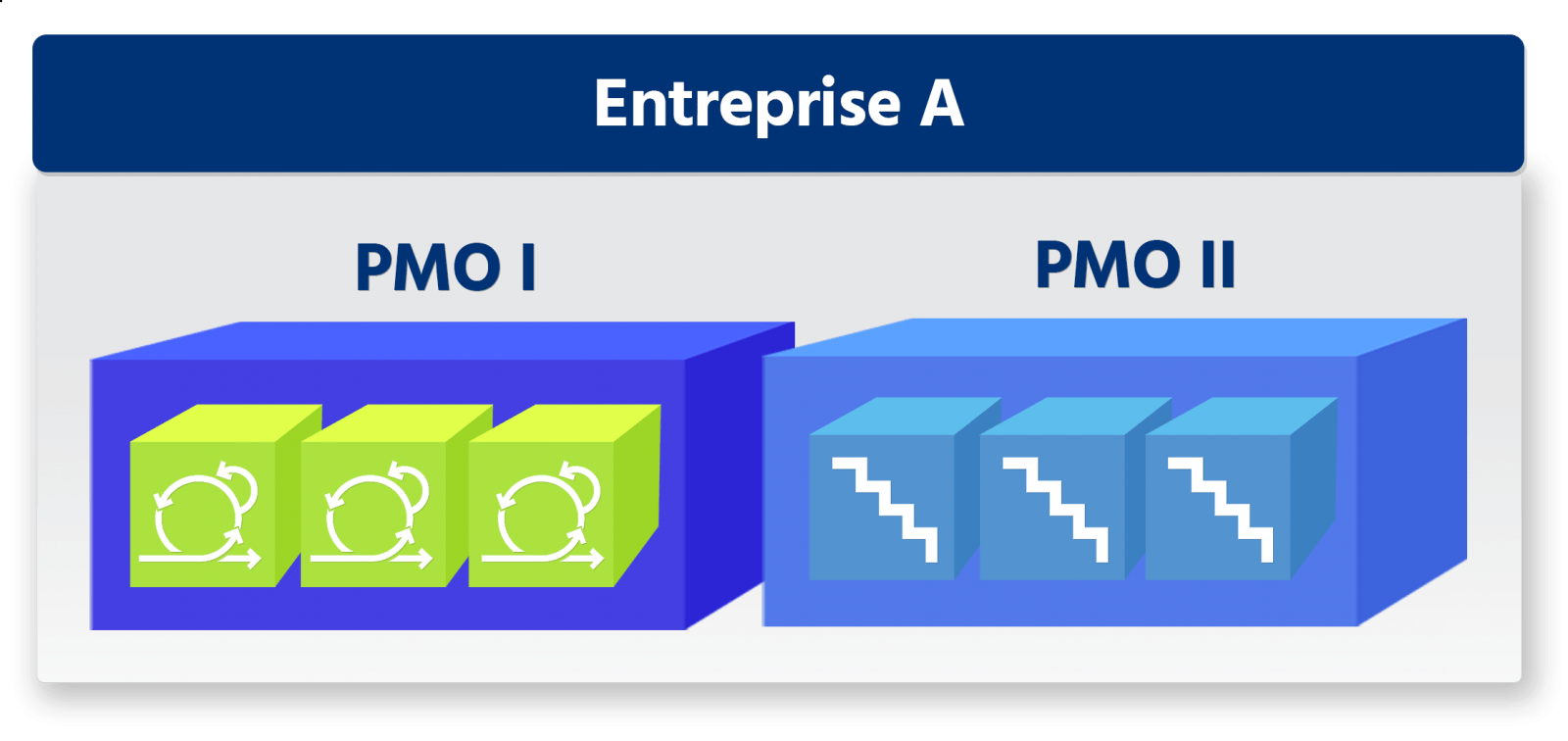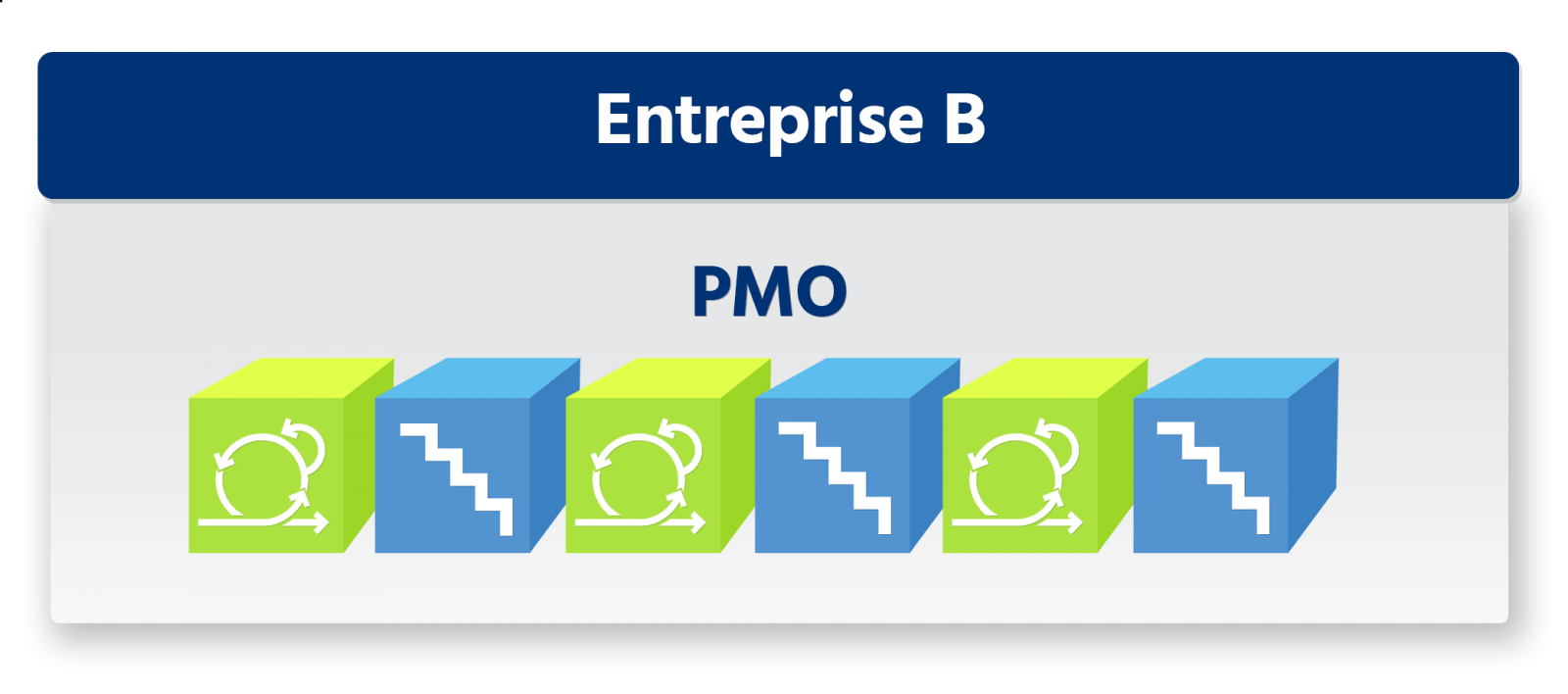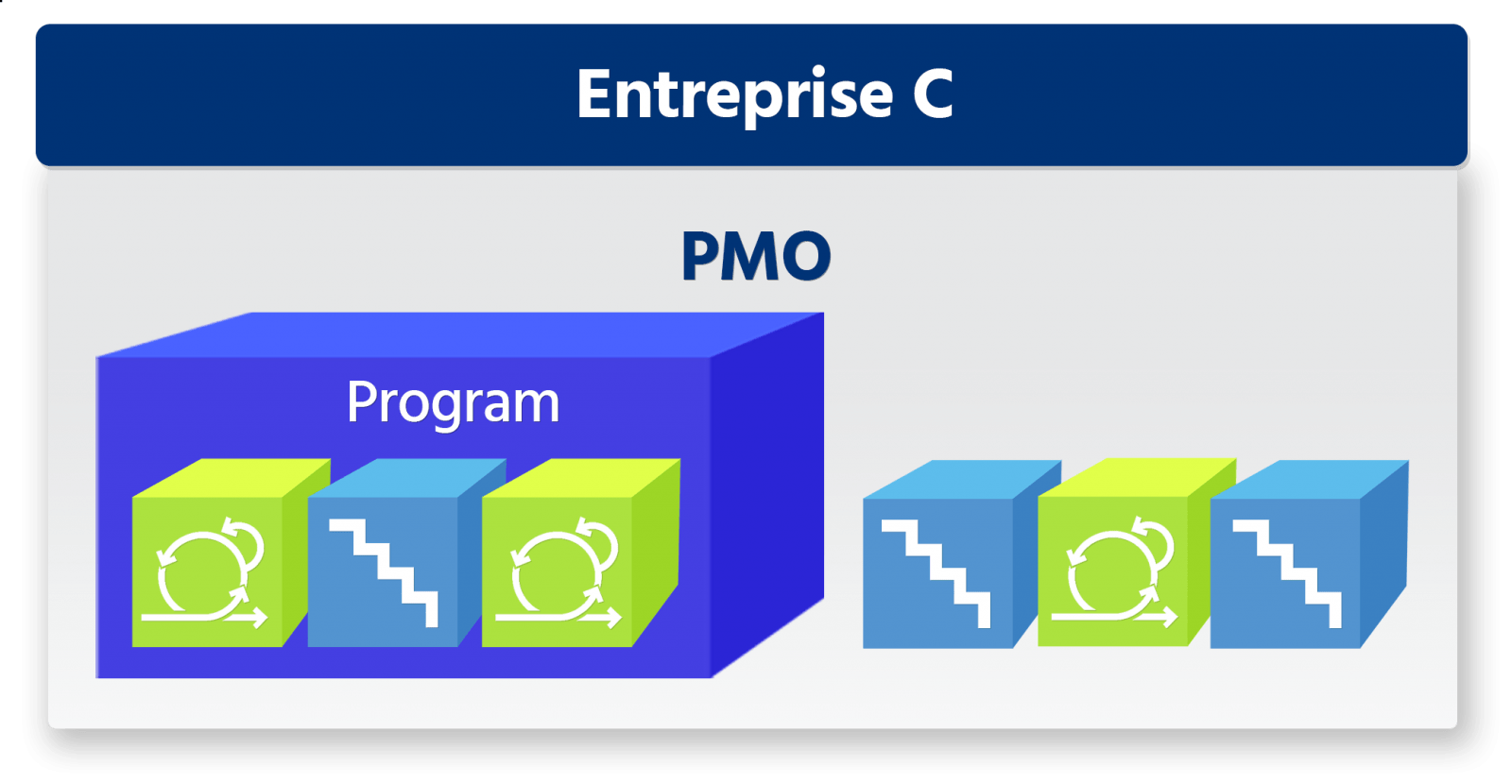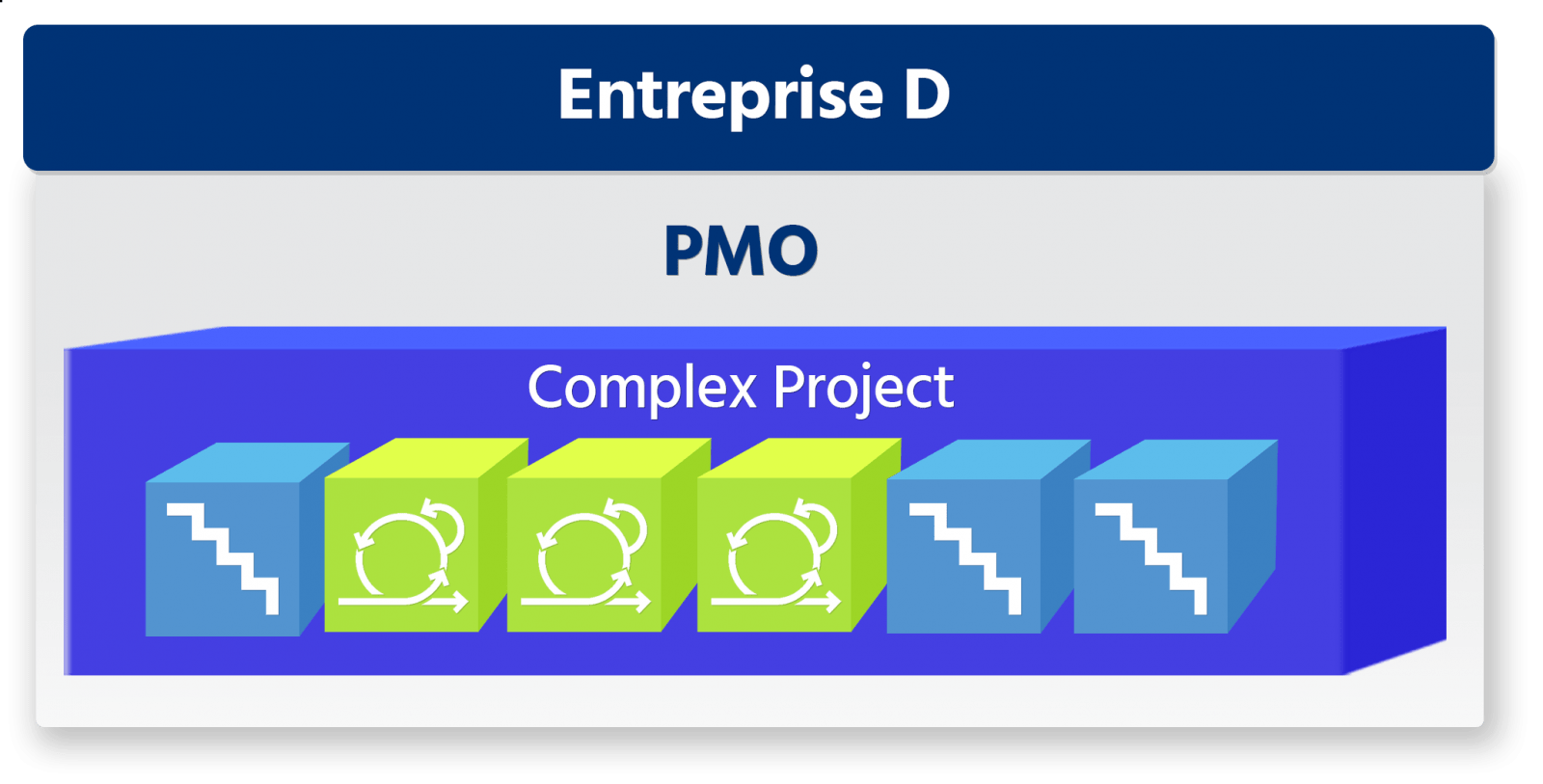I already wrote an article explaining the differences between the management of agile projects and the traditional management. In this article, I will present some scenarios in which agile project management and waterfall can cohabit. In addition, I will discuss the main challenges and what you can do to work with Agile and Waterfall in the same environment.
To simplify writing, I will refer to Agile and Waterfall modes as approaches, although they are not considered as such. There is a great discussion on the use of words as framework, models, best practices, methodology, etc., but this is not the purpose of this article.
When we talk about project management, we usually think of traditional management also known as waterfall.
In the early 2000s, the publication of the Agile Manifesto aroused particular interest in the adoption of models and structures aligned with the agile mentality.
But what we see is that the adoption of Agile is not as simple as we thought. It was then that many companies began to develop a hybrid model.
Do you know about hybrid project management? Let’s start with some definitions.
WATERFALL
The cascade approach is characterized by sequential development, that is, we do the analysis of needs and feasibility, the complete development of the solution, the tests and, finally, the delivery.
Despite its popularity, this approach is not unanimous in the project management community.
These opponents criticize features such as the late identification of coding errors or the interpretation of needs. Furthermore, it is not effective when it is necessary to make several changes to the project scope during the development phase.
AGILE
The pressure of the market to have more flexible, fast and efficient solutions turned the eyes of managers towards Agile principles. These principles are based on the belief that changes in the development process are not only inevitable, but also necessary.
Another characteristic that differentiates these two approaches concerns the need to define the scope at the start of the project. In the agile approach, development progresses alongside demands for change.
On the other hand, users of the traditional approach believe that the Agile approach lacks formality in documentation and processes.
WHY NOT A HYBRID MANAGEMENT?
Several studies demonstrate the viability of the cohabitation between the two approaches. There are also cases where both are used for independent projects. Other examples confirm the possibility of having projects managed in Agile and Waterfall in the same PMO structure.
A survey conducted by Scrum Aliance (2017) among users of the Scrum methodology revealed that 78% of respondents said they used Agiles-Scrum practices in parallel with Waterfall practices. The existence of “hybrid” environments was also identified in 7% of the organizations that participated in a research conducted by the Massachusetts Institute of Technology – MIT.
THE CHALLENGES OF HYBRID MANAGEMENT
The coexistence of these two approaches can pose challenges to managers. One of the main challenges is the transition from traditional practices to Agile practices.
Other questions concerning the management of resource capacity, long-term planning, integration between several projects, and the requirement of controls by government and tax agents, are raised as obstacles by the managers who work in a traditional culture and who would like to adopt an Agile approach.
DIFERENT SCENARIOS FOR HYBRID MANAGEMENT
The coexistence between these two approaches can be conceived according to several scenarios.
Project using an Agile approach
Project using a Waterfall approach
Many approaches in many PMOs
This scenario illustrates a company A with multiple PMOs. Each adopts a specific approach, either Agile or Waterfall. In this context, conflicts are resolved internally within each PMO. There are no conflicts within each project, as each uses a single approach specified by the corresponding PMO

A PMO with different approaches in different projects
This scenario illustrates a company B with a single PMO where both approaches are accepted in the company. The projects each take a specific approach.
In this context, conflicts are resolved internally by the PMO. There may be conflicts between projects due to the governance of the PMO. In this case, the company must have criteria for choosing one approach over another

A Program with different approaches for each project within a PMO
This scenario illustrates a company C with a single PMO but accepting both approaches. Here, a program (or a large project) with several projects takes both approaches, but each project follows only one.
However, conflicts can be resolved by the project team separately, but program-level conflicts will need to be resolved by the program manager and the PMO. For the other projects, there are no conflicts, because each one uses only one approach.

Several approaches integrated in the same project
This scenario illustrates a company D with a single PMO. In this situation, the coexistence between the two approaches is applied within a single project, under the management of a single manager and the participation of several development teams.
The main difference from the previous situation is that, in this case, the two approaches are used at the same time in the project, while, in the previous scenario, each project within the program uses only one approach.
In this situation, conflicts should be resolved by the team and the project manager.

SO, WHAT TO DO?
Managing projects in a hybrid environment does not have a magic formula for success. However, several companies using the traditional approach have made the firm decision to adopt the agile approach in their IT projects. It is inevitable that these companies will experience a transition period to allow this cohabitation.
Companies that have already experienced this situation are often sugered to pay attention to the following points.
Project management
When adopting an Agile approach in a traditional context, we should analyze and reflect on the objectives and configuration of its human capital, technological and business management.
In the context of human resources, the level of skills in the Agile Principles, the ability of teamwork resources and the relationship with clients are important points to evaluate.
In the context of technology and processes, it is necessary to identify which tools and processes exist according to the chosen Agile methodology.
Finally, in the context of business management, we need to assess the management style, organizational format, organizational culture, software and information (knowledge) management as well as the existing recognition systems in the organization.
Waterfall – Agile – Waterfall
Initially, during the needs identification and initial planning phases, the Waterfall approach appears to be more efficient than the Agile.
Then, in the development phase, the Agile approach is recommended for team training, coding and testing of software, change management, and iteration with the client. At the end of the project, the traditional approach is back for the delivery steps.

The role of the project manager
The balance between traditional project management and Agile management is the key to success in hybrid management. The traditional project manager plays a role of planner and controller, while the Agile manager plays a role of coach and protector of his team
Traditional behavior
- Planning all phases of the project in detail
- Identification of activities
- Assignment of resources
- Budget management
- Risk management
- Point of contact with the client and the sponsor
- Communicate the progress of the project to senior manager
Agile behavior
- Leadership
- Facilitate relationships in the team
- Motivate and promote collaboration
- Remove barriers in the project team
- Develop an initial plan
- Communicate the progress of the project to senior management
Did you like it?
share it Didn’t you like it?
comment or leave your thoughts to improve it


